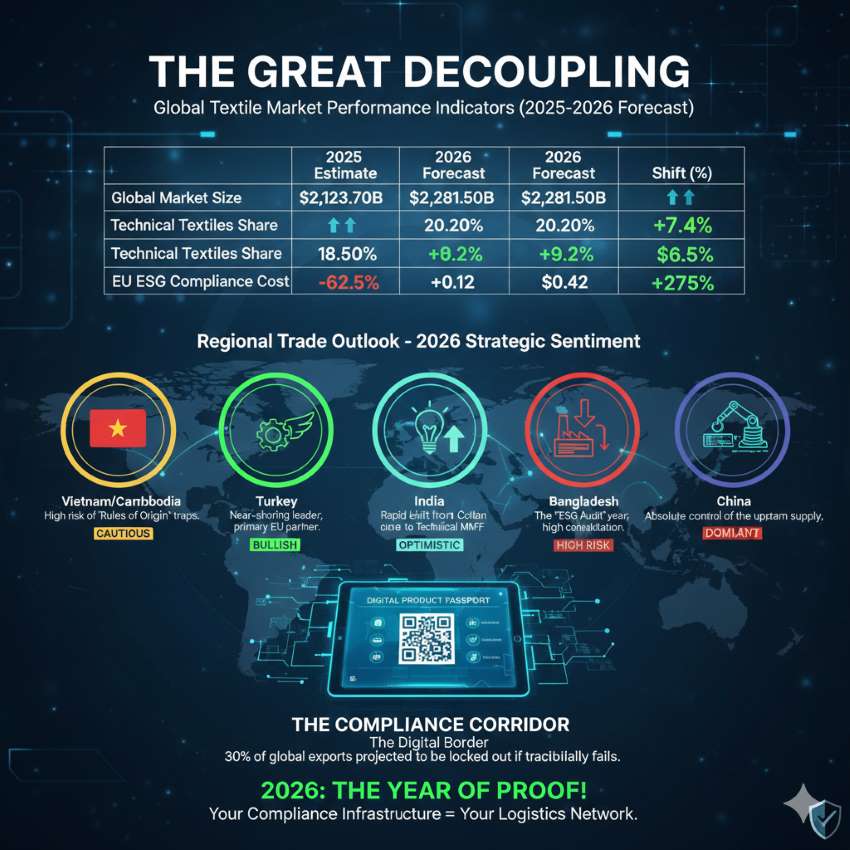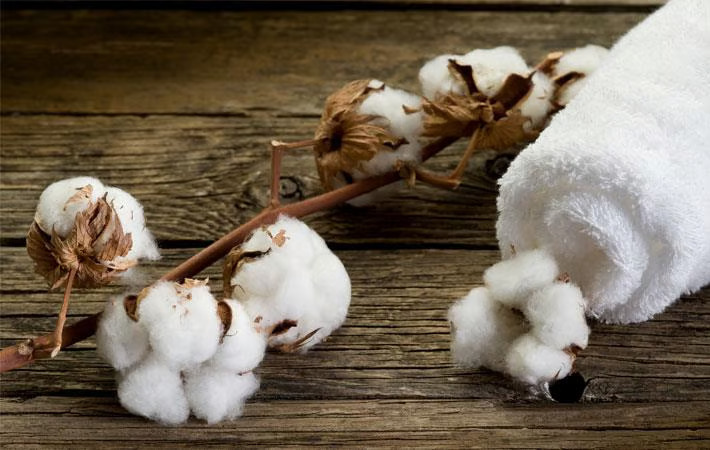
In the sprawling fields of West Texas and the ginning factories of Gujarat, tremors of geopolitical unrest are being felt in cotton. Once regarded as a stable global commodity, cotton now sits at the crossroads of trade wars, diplomatic recalibrations, and sustainability imperatives.
As per the International Cotton Advisory Committee’s (ICAC) latest Cotton Market Reports (June 2024 and May 2025 editions), the 2024-25 global cotton season is expected to yield approximately 25.8 million tonnes of lint, marginally higher than the anticipated consumption of 25.5 million tonnes. But behind this veneer of balance lies a volatile reality—one shaped less by yields and more by fractured trade ties and supply chain uncertainty.
A trade war that won’t end
At the heart of this upheaval lies the prolonged trade war between the US and China. The two largest economies—and most important players in the cotton value chain—remain locked in a dispute that shows no signs of resolution.
“These tariffs not only increased costs but also disrupted global cotton supply chains, forcing a reevaluation of sourcing strategies,” the Cotton Review May 2024 bluntly states. Although the Phase One Agreement of January 2020 offered a temporary truce, its expiration in late 2021 reopened trade wounds. As of the 2024-25 season, China’s tariffs on US cotton remain steep, 26 per cent for in-quota and 65 per cent for out-of-quota imports. On the other side, the US has imposed tariffs ranging from 7.5 to 25 per cent on Chinese textiles and apparel.
China sourcing beyond the US
China, which remains the world’s largest cotton consumer at an estimated 8.3 million tonnes this season, is no longer placing its cotton eggs in the US basket. In 2017, 53 per cent of China’s cotton imports came from the US. By 2019, this figure had dropped to 22 per cent, and the downward trend continues. Brazil and Australia have emerged as primary alternatives, with Brazil nearly matching US supply volumes to China in 2023. This realignment isn’t just about avoiding tariffs, it’s about reengineering supply chains for long-term resilience.
US cotton finds new homes
While China may be cooling on US cotton, other countries are actively warming up. The geopolitical reshuffling has opened new avenues for American exports, particularly in South Asia and Southeast Asia.
Table: US cotton lint exports by partners and tariff impacts (2024-25)
|
Export partners |
Percentage of total US cotton lint exports (2024/25) |
Previous Rate |
Any retaliatory rate announced on US |
Updated rate by US |
Timeline |
|
China |
10% |
34% |
125% |
145% |
no timeline set |
|
Pakistan |
23% |
29% |
None |
10% |
29% paused until July 25 |
|
Turkey |
8% |
10% |
None |
10% |
no timeline set |
|
Vietnam |
17% |
46% |
None |
10% |
46% paused until July 25 |
|
Bangladesh |
5% |
37% |
None |
10% |
37% paused until July 25 |
|
India |
5% |
26% |
None |
10% |
26% paused until July 25 |
The trade tensions have led to the reshaping of global supply chain. The US, in turn, has diversified its import sources for textiles and apparel, leading to increased reliance on countries like Vietnam, Bangladesh, Turkey, Pakistan, Mexico, and India. These countries have seen substantial annual growth rates in their export values to the US between 2017 and 2021, with Vietnam at 6 per cent, and both Bangladesh and Turkey at 5 per cent.
Several countries are actively negotiating or increasing their imports of US cotton to mitigate tariff effects and reduce trade imbalances:
Bangladesh: Estimated to become the world's largest importer in 2024-25, Bangladesh is negotiating duty-free access for US cotton and finalizing a dedicated bonded warehouse facility for US cotton imports.
Egypt: Expanding its domestic consumption capacity with significant investments, Egypt's imports are revised upward.
Indonesia: Considering increasing US cotton lint imports and a tax cut for US goods, rather than retaliating against tariffs.
India: Has already consumed about five times more cotton in the first six months of the 2024-25 season compared to the previous year and is negotiating to potentially increase US cotton lint imports.
Pakistan: Has increased US cotton imports in 2024-25 and is reportedly negotiating to further increase cotton and soybean imports.
Vietnam: Likely to cut tariffs and import more US cotton.
Table: World cotton lint balance sheet (2024-25 est.)
|
Category |
Value ('000 metric tonnes) |
|
Production |
25829 |
|
Beginning Stocks |
17132 |
|
Imports |
9450 |
|
Consumption |
25527 |
|
Exports |
9450 |
Cotton faces other foes
While geopolitics dominate headlines, structural challenges gnaw at the fabric of the cotton industry. Cotton continues to lose ground to man-made fibers (MMFs), which are cheaper and more predictable. Add to this a rising wave of regulatory requirements, including traceability mandates in Europe and the US, and the value chain is under growing pressure. “Considering the complexity of the cotton value chain, the implementation of all these policy changes will be difficult and likely would add costs and audit fatigue to the value chain,” warns the ICAC.
Meanwhile, climate concerns are clouding the outlook. Drought in US cotton heartlands like Texas threatens exportable supplies, and stagnant global GDP growth raises questions about long-term demand
A fragile fabric in a fractured world
Cotton, once a symbol of stable, predictable trade is now stitched into a chaotic geopolitical tapestry. From Beijing to Dhaka, Cairo to Washington, the decisions of diplomats and trade negotiators are increasingly shaping the fate of farmers, millers, and apparel exporters. But the global cotton industry has shown a remarkable ability to adapt. Whether through new alliances, import diversification, or domestic capacity building, stakeholders across continents are reshaping their futures. The fiber may be soft, but the strategies are getting tougher.












